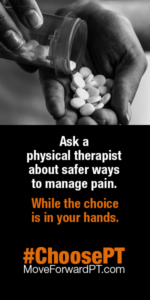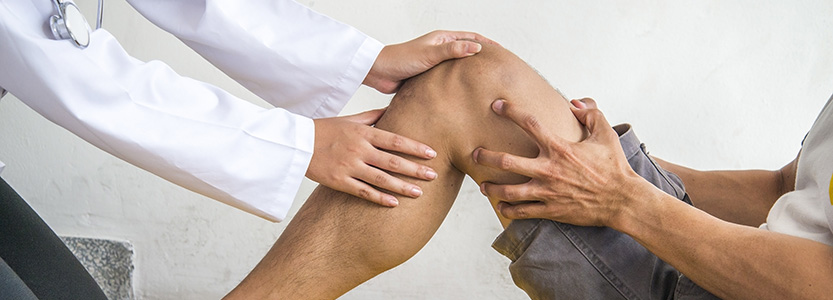 Unless you do not have access to TV, internet and social media, you have heard the recent concerns about opioid use and the national epidemic. Recently I’m getting more and more questions from patients with reservations about taking prescribed opioids. As a physical therapist it’s not within the scope of our practice to prescribe medications; however, we do witness the benefit they can provide patients, and at times the adverse effects. For acute pain associated with injuries and post-operative procedures, opioids are important for pain management to allow patients recuperative rest as well as to complete necessary physical therapy treatment and the home exercise program. Patients with intractable pain associated with certain end of life diseases or cancer often need medication to provide comfort; which out-weigh negative aspects of prolonged opioid use. Drawbacks include the common complaint of constipation, increased risk of depression, withdrawal symptoms and the serious issue of addiction.
Unless you do not have access to TV, internet and social media, you have heard the recent concerns about opioid use and the national epidemic. Recently I’m getting more and more questions from patients with reservations about taking prescribed opioids. As a physical therapist it’s not within the scope of our practice to prescribe medications; however, we do witness the benefit they can provide patients, and at times the adverse effects. For acute pain associated with injuries and post-operative procedures, opioids are important for pain management to allow patients recuperative rest as well as to complete necessary physical therapy treatment and the home exercise program. Patients with intractable pain associated with certain end of life diseases or cancer often need medication to provide comfort; which out-weigh negative aspects of prolonged opioid use. Drawbacks include the common complaint of constipation, increased risk of depression, withdrawal symptoms and the serious issue of addiction.
The CDC reports that every day more than 40 people die from overdose of prescription opioids. Thomas Friedman, CDC Director, stated in USA  Today, “We know of no other medication routinely used for a nonfatal condition that kills patients so frequently. We hope to see fewer deaths from opiates. That’s the bottom line.” A survey over a period of one month in 2014 revealed 4.3 million Americans had engaged in non-medical use of prescribed opioids. Science Daily reported study findings that 4 out of 5 heroin users ages 16-25 had used opioids prior, often prescribed for dental procedures or sports injuries. In addition to young people, the CDC states one of the fastest growing heroin use groups is higher income individuals who have used a prescribed opioid.
Today, “We know of no other medication routinely used for a nonfatal condition that kills patients so frequently. We hope to see fewer deaths from opiates. That’s the bottom line.” A survey over a period of one month in 2014 revealed 4.3 million Americans had engaged in non-medical use of prescribed opioids. Science Daily reported study findings that 4 out of 5 heroin users ages 16-25 had used opioids prior, often prescribed for dental procedures or sports injuries. In addition to young people, the CDC states one of the fastest growing heroin use groups is higher income individuals who have used a prescribed opioid.
 New 2016 CDC guidelines recommend using physical therapy and exercise to manage pain. The guideline reports, “There is high-quality evidence that exercise therapy (a prominent modality in physical therapy) for hip or knee osteoarthritis reduces pain and improves function immediately after treatment and that the improvements are sustained for at least 2-6 months. Previous guidelines have strongly recommended aerobic, aquatic, and/or resistance exercises for patients with osteoarthritis of the knee or hip. Exercise therapy also can help reduce pain and improve function in low back pain.”
New 2016 CDC guidelines recommend using physical therapy and exercise to manage pain. The guideline reports, “There is high-quality evidence that exercise therapy (a prominent modality in physical therapy) for hip or knee osteoarthritis reduces pain and improves function immediately after treatment and that the improvements are sustained for at least 2-6 months. Previous guidelines have strongly recommended aerobic, aquatic, and/or resistance exercises for patients with osteoarthritis of the knee or hip. Exercise therapy also can help reduce pain and improve function in low back pain.”
Physical therapy involves a comprehensive evaluation of movement, mechanics, range of motion and strength while assessing for dysfunction. An individualized plan of care is developed based on the findings. Treatment may include soft tissue and joint mobilization or manipulation, therapeutic exercise, modalities (ice, heat, electrical stimulation), and education to improve posture, body mechanics, movement, decrease repetitive stress and strain, and pain management strategies.



